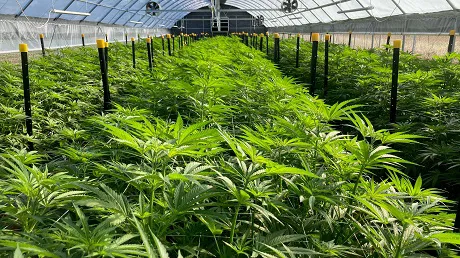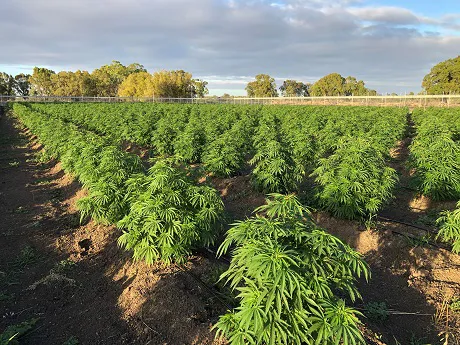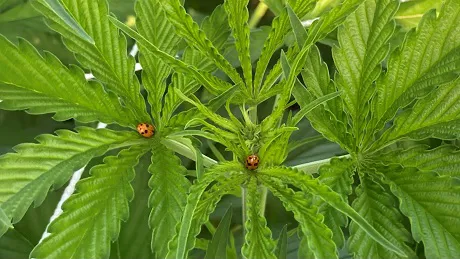In Australia, growing medicinal cannabis is all about providing patients with medicine for their conditions. Therefore, if a plant is so beneficial to a human, why shouldn’t it be for the environment where it grows as well? This lead Nan-Maree Schoerie, Managing Director of Murray Meds, to ask herself why not use the free sun and choose a climate the plant has adapted to for a thousand years. “Our whole philosophy at Murray Meds is to grow these medicines as naturally as possible, so no chemicals,“ she says. “We follow two key cultivation principles: regenerative and organic farming.”
A self-sustaining ecosystem
Regenerative farming describes a cultivation methodology that pays close attention to the development of an ecosystem within the soil which facilitates the growth of plants, making them stronger and healthier. “We firmly believe that, if we handle a natural product, we must maintain it that way,” she points out.“ This was one of the main drivers that pushed Nan-Maree to adopt regenerative farming. “You have to work on the soil and to build up a self-sustaining ecosystem there that supports the growth of the plant, naturally,” she says. “Bluntly put, for regenerative farming you have to make the soil work for you, creating conditions to encourage the beneficial natural organisms.”

Australia, like many countries, has damaged its topsoil due to decades of poor farming practices, for example, carbon levels in soils have plummeted after years of applying inorganic fertilizers. We use summer and winter cover crops, rice straw, worn castings, compost, and compost teas, and a low/ no-till approach to encourage the soil microorganisms to start doing their job again. This is grounded in the fact that nutrition from the soil is taken up by the roots thanks to specific bacteria, fungi, and nematodes. If you don’t have a healthy population in the soil, then the plant has to do everything by itself! It will take a few years before the soil is truly restored. For instance, in our farm, there were no earthworms now, they have started coming back naturally – we are creating this environment where nature works for us.”
“We have not abandoned all modern farming practices, we make data-driven decisions, for example, we monitor in real-time below ground soil moisture levels. It is fascinating to see the moisture levels start cycling as the roots penetrate different levels."

Achieving organic
The other aspect of Murray Meds cultivation is organic. “When you talk about organic, it is almost impossible to achieve in a greenhouse,” she points out. “Because ultimately you are adding chemicals to the media.” Murray Meds indeed also grows some of its cannabis in poly tunnels. “80% of production is outdoor, and 20% from polytunnels. This is part of our strategy to accelerate our genetics. We still grow in soil and only feed the plants natural organic substances. Everything we bring into the farm is certified organic, we believe it’s the right thing to do.”
As a GACP/GMP site, our medicines have strict pesticide and heavy metal limits. Thus for us, an organic approach also implies using an IPM regimen that does not include any pesticide. “It was a steep learning curve,” she says. “We have introduced beneficial insects, but the bonus is we have also attracted a lot of naturally occurring beneficial bugs in the farm.

Considering all of that, Nan-Maree is surprised about one thing. “I am fascinated by the amount of money invested in greenhouses, in Australia,” she says. “I understand why you'd build greenhouses in Canada or polar caps, but in Australia, we have an ideal climate – it just doesn’t make sense to me. The strict regulations and controls ensure we produce quality cannabis that can be exported globally, grown the way nature intended.”
For more information:
Murray Meds
1300 833 988
[email protected]
murraymeds.com
